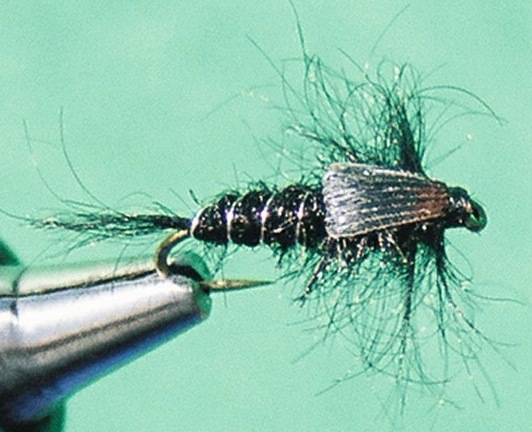 |
|
FLY-TYER'S CORNER
by Paul Egan |
|
Pseudo Seal Nymph
I began fly tying at age 12, when I took a beginner class at Kiene’s fly shop. I’ve been tying flies off and on for several years, but really got going when I had a surgery and was laid up in the house for a few weeks. I became frustrated with the cheap vise I was using and went out and bought a nice one and started to put it to use.
I tied flies for my dad and his fishing partner “Doc”. I still didn’t have a fly rod. The three of us took a trip to the Trinity River system, and the only fish that were caught were on my flies. I was hooked.
Ever since I lost a nice trout on the Provo River in Utah due to a hook that broke, I have been trying to tie better and better flies. My goal is to tie flies that are stronger, more life like, match the bug’s color, are more rugged to last longer, and simple to tie.
The Pseudo Seal Nymph is one of those rugged, simple flies. It uses only four materials and will last through several fish. I have been tying this fly for some time, but it really earned its place in my fly box when I was fishing with Pete Koistinen on the Yuba River after the high waters had changed the river so dramatically. Pete was fishing ahead of me. That is not a good position to be in because Pete can be a vacuum cleaner some times. He will hit every spot and usually pull out a fish or two. He was doing well this morning, picking up fish using an egg pattern. I changed to the Pseudo Seal Nymph and started to pick up fish even after Pete went through the hole. The fish that took the nymph were larger than the ones Pete had been catching. Large enough for Pete to ask what I was using. When I gave him one, he tied it on right away. That morning we caught over 20 fish up to 19 inches.
Materials
Tying Instructions:
|
||
